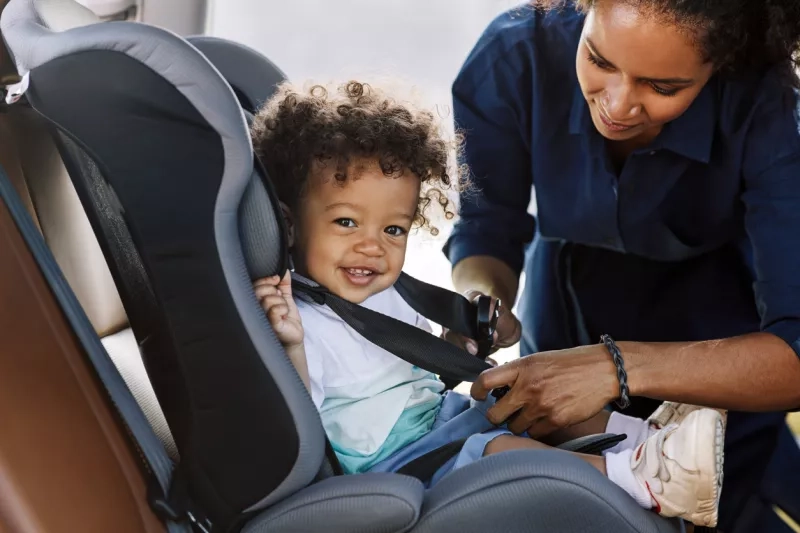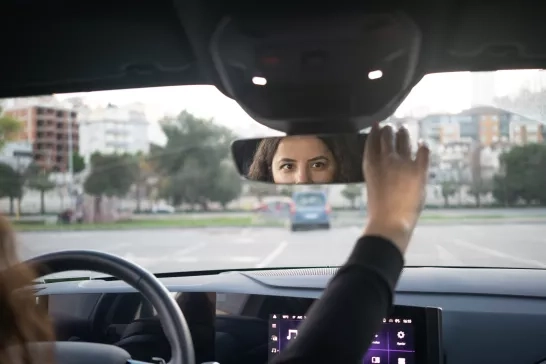
Keep them safe: What every parent needs to know about child car seats
4 Minute Read
"Is my child safe in the back seat of my vehicle?"
It’s a question that most parents ask themselves every time they glance in the rearview mirror as they ferry their kids to school, sports, family events, and playdates.
The truth is, as infants grow out of a baby seat and into something forward-facing as they mature, child car seats have different functions and requirements.
Whether or not a car seat is safe for your child really depends on their age, the kind of seat, and how it’s installed, according to Kristine D’Arbelles, senior director of public affairs at CAA National. “A properly used car seat can reduce the risk of fatal injury by 71 per cent. We believe using the right child car seat is the best way to prevent serious injury,” she says.
“CAA has been helping parents keep their children safe inside and outside the vehicle for decades. We educate parents by providing tips on how to use a car seat properly, and many CAA Clubs across the country have even hosted car seat clinics,” she notes.
Getting the right car seat is important for your child’s safety
Using the correct car seat for your child and having it installed correctly can substantially reduce the number of injuries and casualties in vehicle accidents. In fact, for children younger than age four, using car seats lowers the risk of hospitalization by 67 per cent. According to CAA National, proper booster seat usage for children at that stage provides 59 per cent more protection than just a seatbelt.
Studies also show that keeping children in a rear-facing car seat significantly reduces the risk of serious injuries or fatalities in the event of an accident. This is because rear-facing seats support the head, neck, and spine more effectively during a collision.
Ensure that the car seat is correctly installed
Not only does your child need to be in the right car seat for their size, but the installation is critical. If the car seat is installed too loosely, serious injury or fatality could result if a collision occurs.
Before you install, read and understand:
- The vehicle owner’s manual section on anchors and installation of a child car seat
- The user manual for the child car seat itself
- The restrictions and laws in your province or territory on the stages of car seat use
- Safety notices and potential recalls
The 4 stages (and ages) for child car seats
There are four stages of protection for your little one while riding in the car. Each province and territory in Canada may have different restrictions regarding car seat stages, so make sure you are familiar with those in your region.
Stage 1: Rear-facing car seat
To protect your infant’s or young child’s head, neck, and back, they should ride in the back in an infant seat, facing the vehicle’s rear. In Ontario, babies start in a rear-facing car seat until they weigh 9 kg (20 lbs). Ensure the harness straps are firm but not tight. As your little one gets bigger, you must assess the fit and readjust as needed.
Experts recommend keeping children rear-facing as long as possible, even after they surpass the minimum weight limits for forward-facing seats. This means continuing to use a rear-facing car seat until the child reaches the height or weight limit specified by the car seat manufacturer—something that, for many children, could be as late as age four. Rear-facing provides the most effective protection in collisions, and extending rear-facing can make a crucial difference in your child’s safety.
Car seat tip: Always look for the National Safety Mark when buying a car seat as proof that it meets Canadian standards, and ensure the seat is installed correctly according to the owner’s manuals.
Stage 2: Forward-facing car seats
When do you move them over to a front-facing seat? Young children sit in a forward-facing car seat between 9 kg and 18 kg (20 lbs and 40 lbs). However, the Canadian Pediatric Society advises that you keep your child rear-facing until they reach the maximum height or weight limit of their car seat. Once your baby outgrows the infant seat, it can be safely transported in a larger, rear-facing seat.
Stage 3: Booster seats
A booster raises a child so they can sit more comfortably against the seat back with their knees bent, allowing the seat belt to work more effectively. Children who have outgrown the forward-facing seat will transition to using a booster seat when they weigh between 18kg and 36kg (40 lbs to 80 lbs). Booster seats provide more protection than using just a seatbelt. The child’s head must be supported while using a booster seat, and a lap/shoulder belt must be used.
Stage 4: Seat belts
When your child outgrows a booster seat, and the seat belt fits them appropriately, they can use one independently. Around the age of eight, when a child is at least 144 cm or 4’ 9″ and 36 kg or 80 lbs, they can start using the regular seat belt in your vehicle. The lap and shoulder belt straps must be worn properly. It is safest for any child aged 13 or under to continue sitting in the back seat.
Safety tip: Although teenagers are responsible for their own buckle-up safety, drivers are actually responsible for ensuring that all passengers under the age of 16 are securely strapped in.
Sign up for a car seat clinic! Seats for Kids offers car seat clinics in Ottawa, Eastern Ontario, and Kingston. Learn more about their clinic schedule at seatsforkids.ca.




